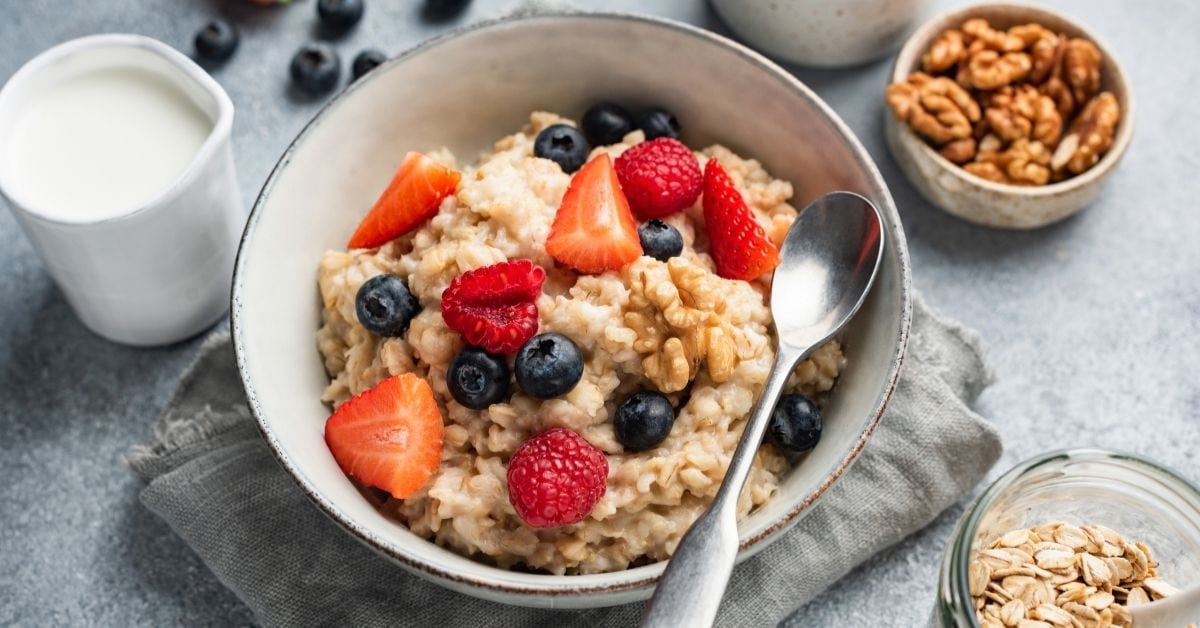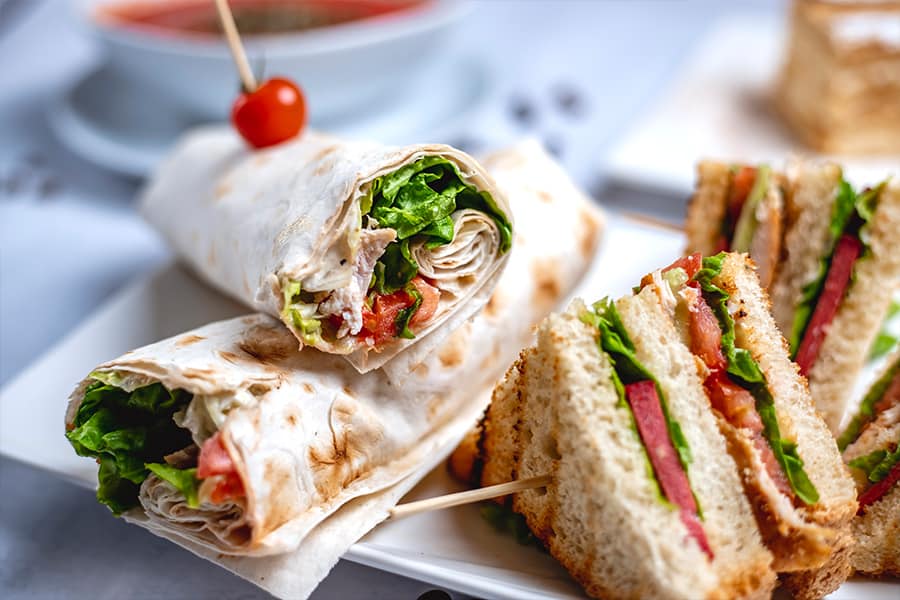Summer camping is a cherished tradition that combines the great outdoors with the pleasure of sharing meals under the open sky. Good food not only nourishes the body but also enhances the overall camping experience. Whether you’re a seasoned camper or a newbie, this guide will help you plan the best food to bring on your summer camping trip, ensuring everyone is well-fed and happy.
Planning Your Camping Menu
When planning your camping menu, it’s essential to consider dietary restrictions and preferences within your group. Balance is key, as you want to ensure meals are both nutritious and convenient. Focus on non-perishable and lightweight foods that are easy to transport and store.
1. Breakfast Options
Instant Oatmeal and Toppings:
Oatmeal is a camping staple due to its ease of preparation and nutritional value. Pack individual packets of instant oatmeal and bring along a variety of toppings like dried fruits, nuts, and honey to add flavor and texture.

Pancake Mix and Syrup:
A good pancake mix only requires water to prepare. Bring along a small bottle of syrup or other toppings like fresh berries or chocolate chips for a delightful morning treat.
:max_bytes(150000):strip_icc()/21014-Good-old-Fashioned-Pancakes-mfs_001-1fa26bcdedc345f182537d95b6cf92d8.jpg)
Breakfast Bars and Pastries:
For those on the go, breakfast bars and pre-packaged pastries are perfect. They are easy to pack and provide a quick energy boost to start the day.
:max_bytes(150000):strip_icc()/blueberry-and-meyer-lemon-breakfast-pastry-FT-RECIPE0422-1d51563ab9b042bfb8c46df2860020fa.jpg)
Coffee and Tea:
No camping trip is complete without a warm beverage in the morning. Instant coffee and tea bags are lightweight and easy to prepare. Consider bringing a portable coffee maker or a French press for an upgraded experience.

2. Lunch Ideas
Sandwiches and Wraps:
Simple and versatile, sandwiches and wraps can be customized to suit any taste. Use non-perishable ingredients like canned tuna, chicken, or hard cheeses, and add fresh vegetables like lettuce, tomatoes, and cucumbers.

Cold Salads:
Prepare cold salads like pasta salad, potato salad, or quinoa salad before your trip. These can be stored in airtight containers and make for a refreshing lunch option.

Canned and Dried Fruits:
Fruits are essential for a balanced diet. Canned fruits in light syrup or their own juice are convenient, while dried fruits like apricots, raisins, and dates provide a sweet and nutritious snack.

Ready-to-Eat Soups:
Pack ready-to-eat soups that can be quickly heated over a camp stove. They are hearty and comforting, especially after a long hike.
:max_bytes(150000):strip_icc()/053123_TomatoSoup-MPPSoupsAndStews-Morgan-Hunt-Glaze-f59a081d7efb4625a75a1a907a6b1cbf.jpg)
3. Dinner Choices
Foil Packet Meals:
Foil packet meals are a camper’s best friend. They are easy to prepare and cook directly over the campfire or grill. Popular options include chicken and vegetables, fish with lemon and herbs, and beef with potatoes and carrots.

Instant Noodles and Pasta:
Instant noodles and pasta are quick and satisfying. Bring along a variety of sauces, like marinara or pesto, to keep things interesting. Add in some canned vegetables or meats for extra flavor and nutrition.
:max_bytes(150000):strip_icc()/139184-cheesy-ramen-noodles-4x3-0618-8d35bb9ffe384a5b8408240cad9cd434.jpg)
Dehydrated Meals:
Dehydrated meals are lightweight and have a long shelf life, making them perfect for camping. They come in various flavors and only require hot water to prepare.
Grilled Skewers:
Prepare skewers with a mix of meats, vegetables, and even fruits. Marinate them ahead of time and store them in a cooler. When it’s time to eat, simply grill them over the campfire for a delicious and interactive meal.
4. Snacks and Sides
Trail Mix and Nuts:
Trail mix and nuts are the quintessential camping snacks. They are easy to carry, packed with energy, and can be customized with your favorite ingredients like chocolate chips, dried fruits, and seeds.

Dried Fruits and Jerky:
Dried fruits and jerky are excellent for on-the-go snacking. They are non-perishable and provide a good balance of protein and carbohydrates.
Crackers and Cheese:
Pack a variety of crackers and pair them with hard cheeses that can withstand being out of the fridge for a while. This combination makes for a satisfying and easy snack.
:strip_icc()/cheese-platter-3x_UqE8qKFEAAFq0KPrl-4-c6f285770c7b49dda9d267194d0a19d6.jpg)
Fresh Vegetables with Dip:
Bring along fresh vegetables like carrots, celery, and bell peppers, and pair them with a dip like hummus or ranch. This is a great way to get some fresh produce into your diet while camping.
5. Dessert Delights
S’mores:
No camping trip is complete without s’mores. Pack graham crackers, marshmallows, and chocolate bars for this classic treat. For a twist, try using different types of chocolate or adding peanut butter.
Campfire Cones:
Fill waffle cones with marshmallows, chocolate chips, and fruits. Wrap them in foil and heat them over the campfire for a fun and tasty dessert.

Packaged Cookies and Brownies:
Pre-packaged cookies and brownies are easy to transport and can satisfy any sweet tooth. They are also a great option for those who want to avoid preparing desserts on-site.
Fruit Crisps:
Bring along the ingredients for a simple fruit crisp. Use canned pie filling and top with granola or crushed cookies. Heat it over the campfire for a warm and comforting dessert.
6. Beverages
Hydration Essentials:
Water is the most important beverage to bring on any camping trip. Make sure to have enough for drinking, cooking, and cleaning. Electrolyte drinks or tablets can also help replenish lost minerals after a day of activities.
Hot Drinks:
In addition to coffee and tea, consider bringing hot chocolate mix for a sweet and comforting drink around the campfire.

Cold Drinks:
Juices and sodas are great for refreshing drinks during hot days. Choose small, portable bottles or cartons for easy packing.

7. Food Storage and Safety
Keeping Perishables Cool:
Invest in a good cooler with plenty of ice packs to keep perishable items cold. Consider using separate coolers for drinks and food to minimize the number of times you open the food cooler.

Safe Food Handling Practices:
Always practice good hygiene by washing your hands before handling food. Use biodegradable soap and ensure you have a clean area for food preparation.
Bear-Proofing Your Campsite:
In areas where bears are present, it’s crucial to store food securely. Use bear canisters or hang food bags from trees at least 10 feet off the ground and 4 feet away from the trunk.
8. Eco-friendly Camping Tips
Minimizing Waste:
Plan your meals to minimize waste. Avoid single-use items and choose reusable or compostable options when possible.
Using Reusable Containers:
Bring reusable containers for storing food and leftovers. This reduces waste and keeps your food fresh.

Leave No Trace Principles:
Always follow Leave No Trace principles by cleaning up after yourself, disposing of waste properly, and respecting wildlife and other campers.
Conclusion
Planning the best food to bring on a summer camping trip involves balancing convenience, nutrition, and taste. With the right preparation, you can enjoy delicious and satisfying meals that enhance your outdoor experience. From hearty breakfasts to delightful desserts, this guide covers all the essentials to ensure you have a memorable and enjoyable camping adventure. Happy camping and bon appétit!









